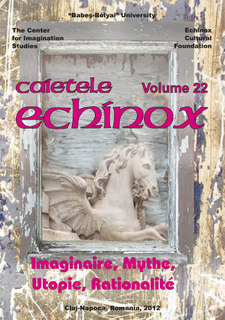L’Ascension de la Lumière. Chorégraphies ontologiques en soufisme, hindouisme, manichéisme
The Ascent of Light. Ontological Settings in Sufism, Hinduism, Manichaeism
Author(s): Silviu LupaşcuSubject(s): Cultural history
Published by: Universitatea Babeş-Bolyai
Keywords: Nasafī; Taittirīya Upanishad; Hinduism; Mani; Manichaeism; Sufism; Light; Darkness; Khurāsān; Zandaqa; Angels.
Summary/Abstract: In Kitāb al-insān al-kāmil or The Book of the Perfect Man, I, ‘Azīz-ud-dīnNasafī dwells on the themes of nourishment and light, of light revealed as the essence of nourishment. Nasafī posits that “all the ascetical exercises and branches of knowledge of the Hindoos” are founded on the apotheosis of the nourishing light. This paragraph foregrounds the Taittirīya Upanishad as a text-witness. Nasafī draws attention to the fact that the theology of nourishment is circumscribed by the “inner voyage of the Hindoos”. Consequently, he ignores the Manichaean paternity of the theology of Light and Darkness. The Islamisation of Manichaean religious ideas points to Nasafī’s concern with avoiding any accusation of zandaqa (allegiance to the dualist heresies) on the part of the Moslem authorities. The hermeneutical elucidation of Nasafī’s discourse on nourishment and light emphasizes the syncretic juxtaposing of certain religious ideas which belong to the core principles of Hinduism and Manicheism, against the spiritual background of the Soūfi School of Khurāsān, during the 18th century.
Journal: Caietele Echinox
- Issue Year: 2012
- Issue No: 22
- Page Range: 166-176
- Page Count: 11
- Language: French
- Content File-PDF

